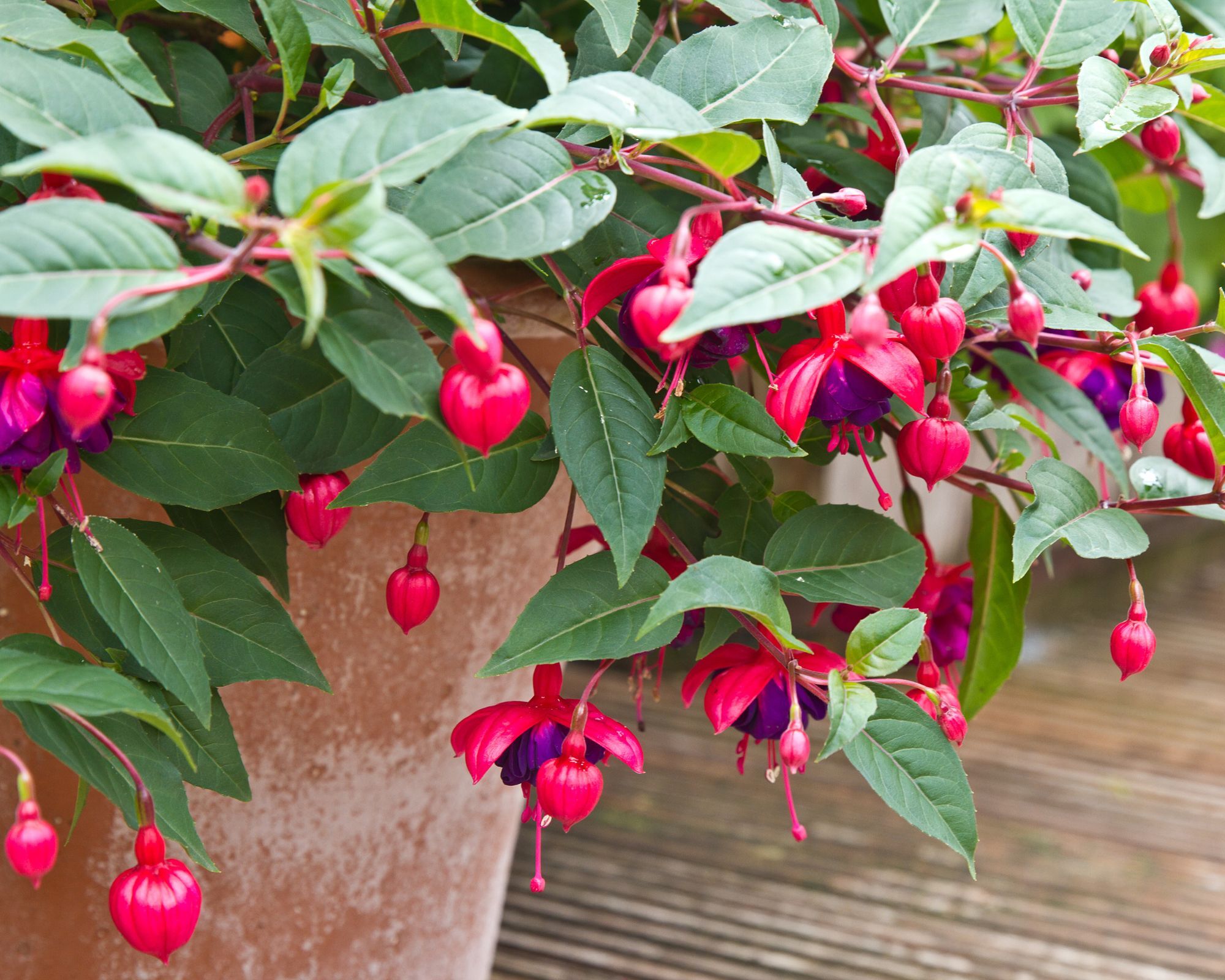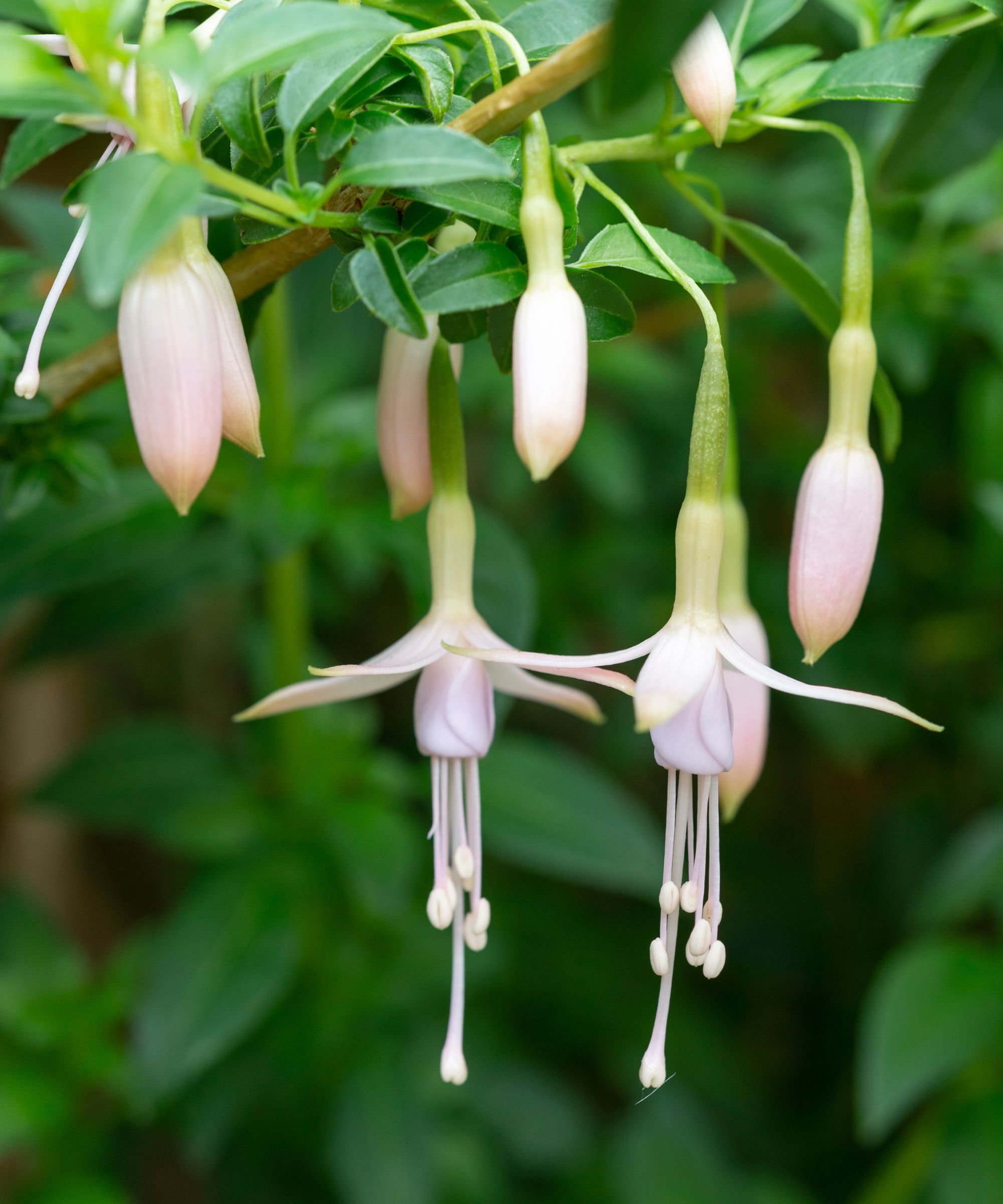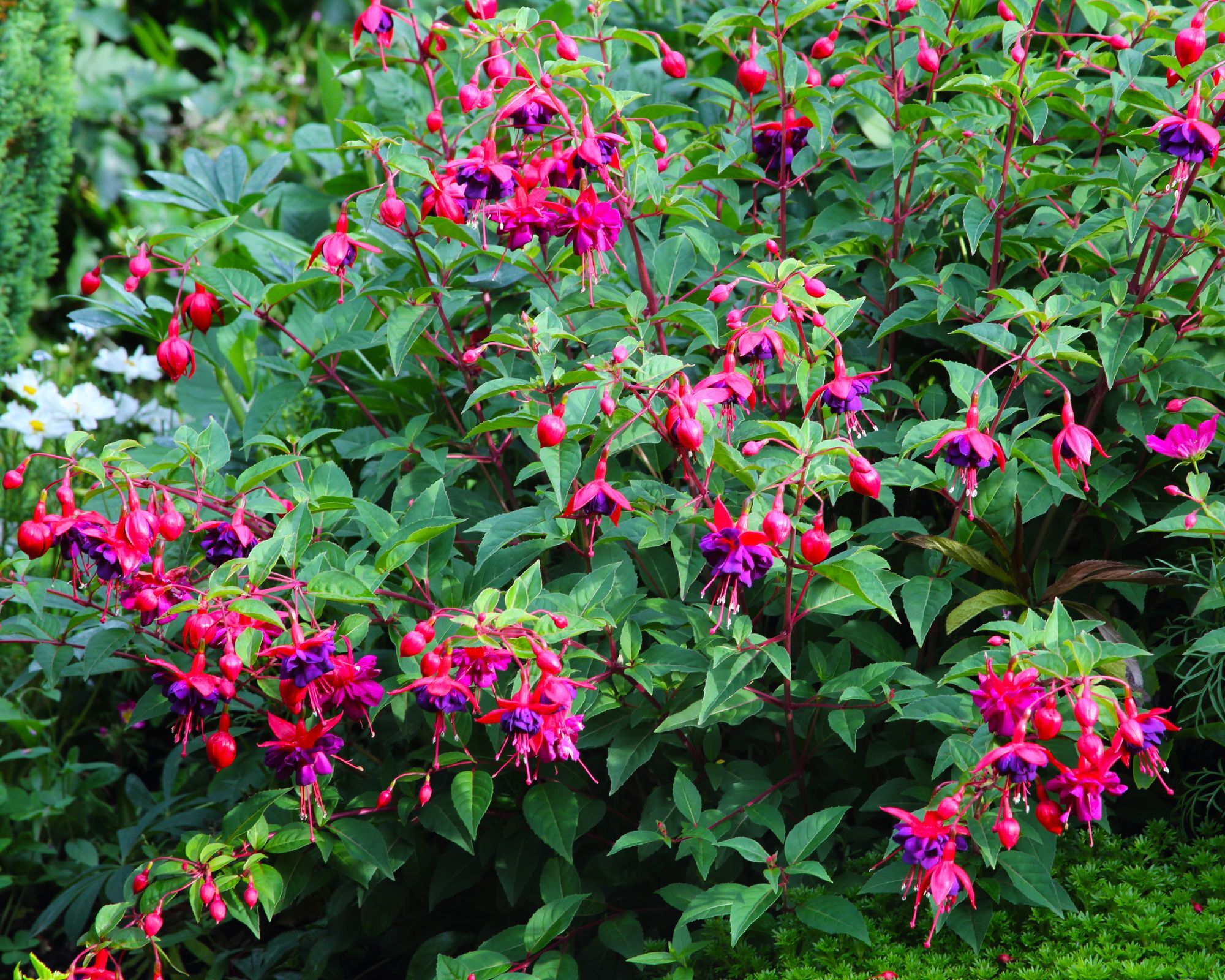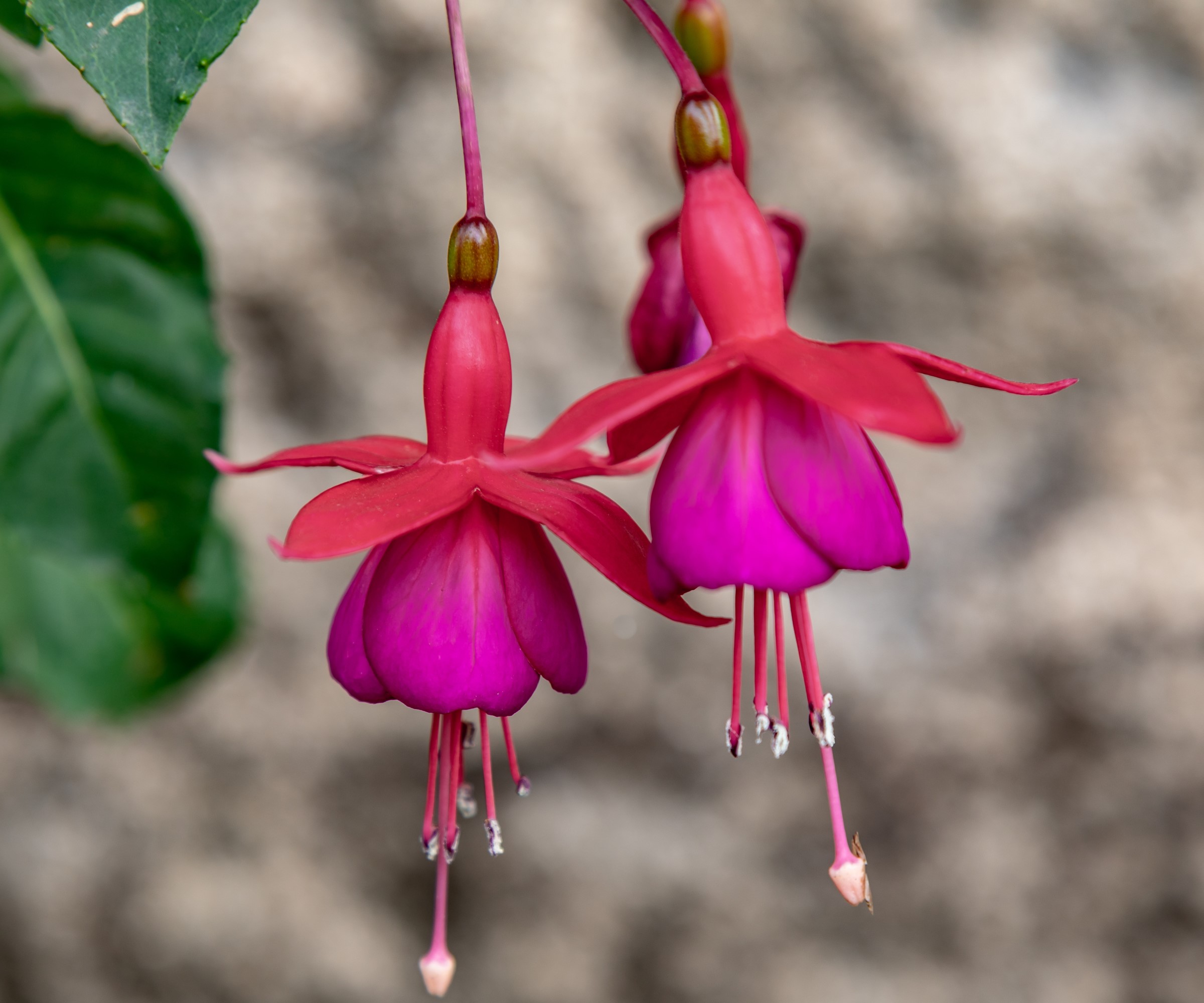
Fuchsias: Those glorious pink bells that hover above the dark canvas of foliage. They're beloved for their almost year-round loveliness. But it might not be a plant on your roster for deadheading this summer, and it should be.
Knowing how to care for fuchsias is refreshingly straightforward. They relish being in the sunshine, but happily tolerate dappled shade, and demand very little attention, yet flower profusely. The seasonal range within the species stretches from May to November, and they perform year after year and want for nothing, bar a little pruning and watering.
It's worth bearing in mind, though, that fuchsias are cut-and-come-again flowers, so you can encourage more and more of these darling dangling flowers by deadheading regularly. Dead flowers often fall off on their own, but deadheading will help your fuchsia plant produce a flurry of flowers. It's just a bonus that the dainty and oh-so-pretty flowers can be used to decorate cakes or scattered on top of summer salads. Here's our guide on how to deadhead your plant to ensure it is a prolific bloomer all season long.

Is it essential to deadhead a fuchsia?
In short, no, it is not crucial that you deadhead a fuchsia, and the long-term health of your fuchsia plant won't be affected if you don't. But, if you don't deadhead fuchsia, you are missing out on a non-stop floral display all season long and your display is likely to be under-par compared to a deadheadded fuschia.
You will need to prune hardy fuchsia at the beginning of the season (once all risk of frosts has passed), but once you have done so, they can be left very much to their own devices throughout spring, summer, and fall, with a little watering and feeding as you go.
However, if you want to maximise the flowering potential of your fuchsia, it is wise to deadhead all the spent flowers throughout the summer, which takes just seconds, and your plant will reward you with a profusion of new flowers.

When fuchsia flowers drop off naturally, they leave behind seed pods. These minute seed pods tend to inhibit the growth of new flowers from that spot. These seed pods don't stop the flowering on all fuchsia varieties, but on the whole, it tends to stop, or at the very least, slow down the production of new flowers.
With this in mind, it is worth removing both the flower and the seed pod to allow for new blooms to appear.
You will notice, when you remove both the spent flower and the seed pod, that because your fuchsia doesn't put all of its energy into ripening the seed pod (to reproduce), it instead produces new flowers, and in abundance. So, whilst it is not vital to deadhead, it is important if you want a long season of interest.
When to deadhead a fuchsia?

When your fuchsia is flowering, it is worth checking it for spent flowers. When the pretty flowers begin to wilt and brown, this means they are coming to the end of their life. At this point, it is well worth removing them. This can just be something you check briefly every few days as you wander around the garden.
Depending on the species of fuchsia you own, the flowering time will vary. Start by checking for spent flowers every day, and you might find you only need to check once every few weeks.
The idea is to deadhead the flowers before they drop to the ground themselves. Deadheading only needs to be done when the plant is in flower.
How to deadhead a fuchsia?

Before you start, be sure to clean your scissors. Forgetting to clean scissors or secateurs is one of the most common deadheading mistakes and is a surefire way to transfer disease around your garden plants. It might seem fussy, but it's a worthwhile step.
Use your scissors to remove the flower, being sure to also remove the seed pod. The seed pod is easy to spot; it's a small green pod attached to the flower.
Trace the flower's pedicle back to the stem (the pedicle is the smaller growth emerging from the stem, on which the flower hangs its head) and cut here. Don't cut the stem itself, as the plant wants to produce flowers from this stem, so don't cut back too hard.
In a few days, you will spy new growth in this spot. It is worth pinching out the growing tips when they're quite young so you get a strong, bushy plant.
Shop fuchsia must haves
These are fantastic pruning scissors not just for fuchsias but for almost all plants and flowers in the garden. They're modestly priced, have ergonomic handles and sharp, durable blades.
Fuchsias are vigorous plants that thrive in rich, porous soil, but when grown in planters, hanging baskets, and tubs, they require frequent feeding and watering. This fuchsia plant food is ideal and can be used once a week.
If you adore fuchsias then you will fall head over heels in love with Dicentra Spectabilis, known as 'bleeding hearts.' They're happy in shady borders and happy in US hardiness zone 3-9. Like fuchsias, they are loved by hummingbirds, but they're shape and form is particularly beautiful and unusual.
For your fuchsias to flourish, it's worth getting to grips with how to fertilize fuchsias and, if you have tender fuchsias, it is particularly vital to understand how to overwinter fuchsias when the temperatures plummet at the end of the season.
On the whole, though, fuchsias are wonderfully reliable plants with very few complaints. Try freezing the deadheaded fuchsia flowers in ice cubes for summer cocktails, or adding them as a pretty detail to desserts this alfresco dining season!







